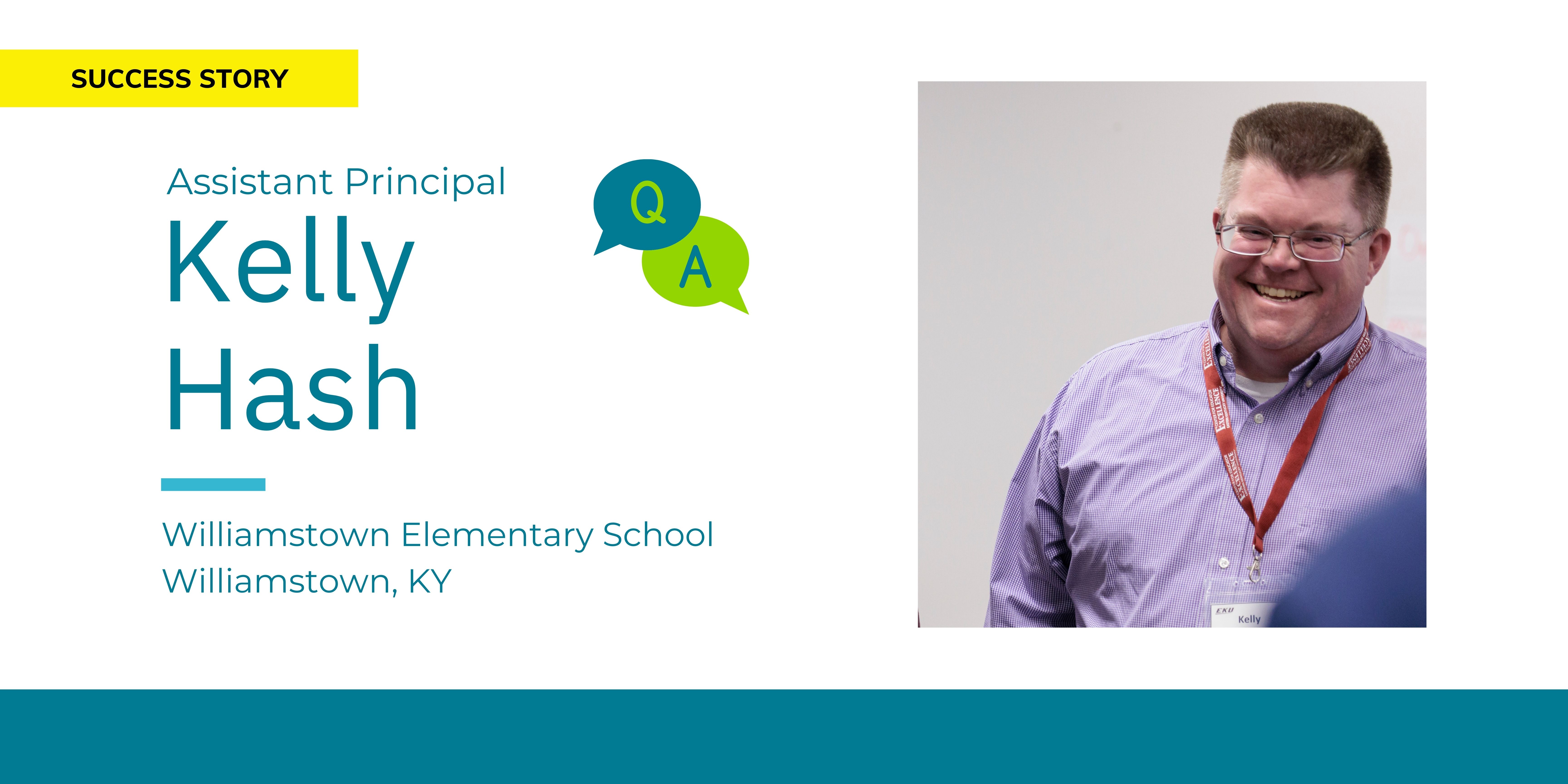
Kelly Hash, assistant principal at Williamston Elementary in Kentucky, dives into his experience with Project Based Learning and the unique ways his school has fostered connection along the way.
Tell us about yourself.
I’m Kelly Hash, assistant principal at Williamstown Elementary School in Williamstown, KY. I grew up both in Rinneyville and Radcliff, Kentucky. I’m in my second year as assistant principal here at Williamstown. Prior to this role, I was a middle and high school band director for many years.
How were you introduced to Project Based Learning?
For my administrative degree, I interned at a school very committed to Project Based Learning. They sent me through their entire PBL faculty training, and I thought, “This is what I’ve been doing as a band director for the last 25 years!” It embodies the same journey of starting a piece of music to perform. We start with the big idea (the melody) then build in everything that makes it come to life with basic core concepts (articulation, blend, balance, tempo, style).
Since then, my journey has been filled with enriching experiences that have continued shaping my commitment to Project Based Learning. Participating in the School Leader Network (SLN) as part of the Kentucky Scaling Gold Standard PBL initiative and engaging in a Project Slice workshop have been among them. I've learned a lot from PBLWorks and Dr. Clark and received a lot of support from my current principal. Now, being able to put into action what I've learned is incredibly fulfilling.
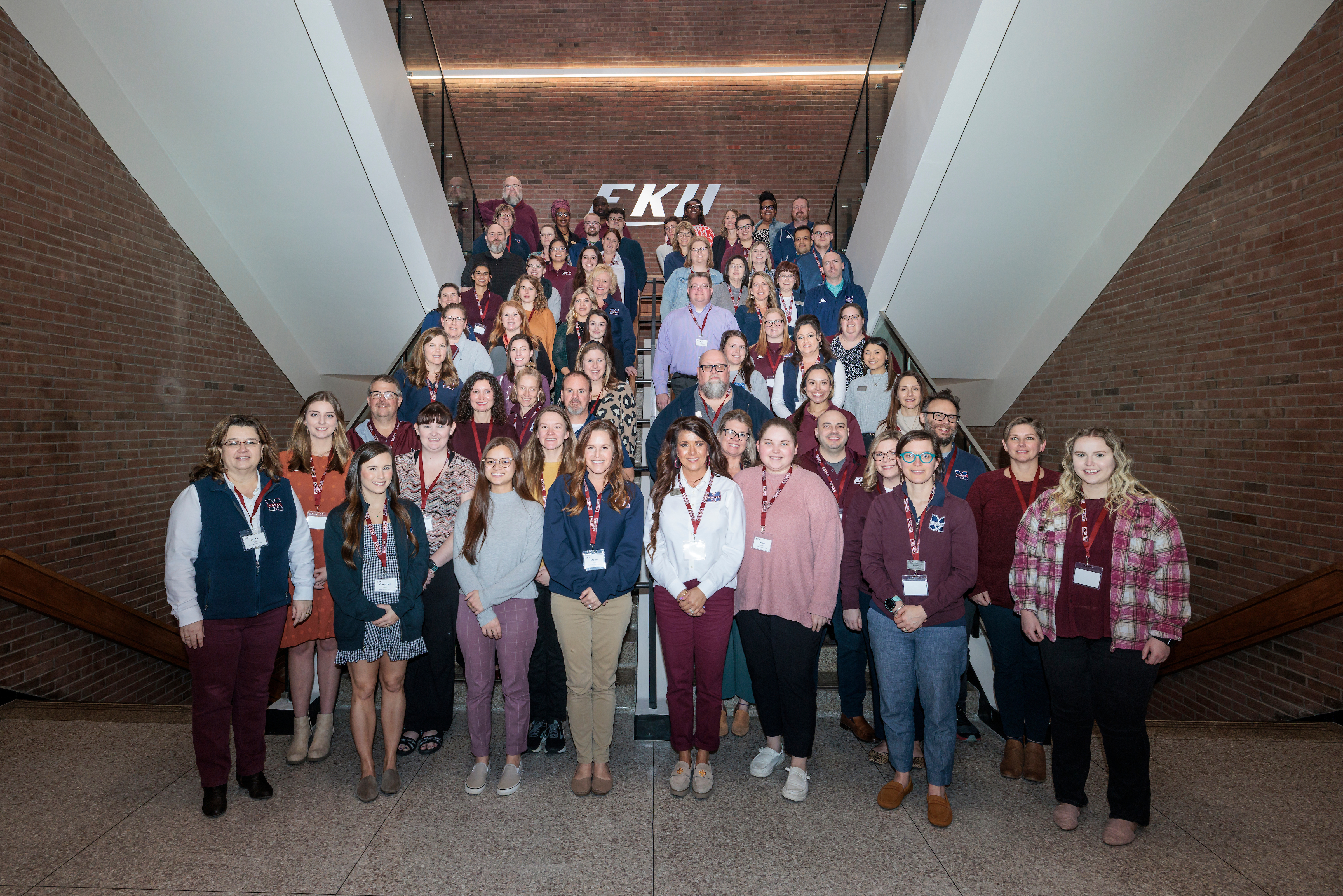
Tell us about your school and how you approach PBL.
Our independent school system, starting in kindergarten up to high school, are all in the same building. Last year, we established a core PBL team with one representative from each grade and our unified arts group, meeting monthly. Many ideas we’ve pursued and our staff’s goals for students have come from those meetings. Now, we also involve input from our greater community, who encouraged us to pursue Project Based Learning further.
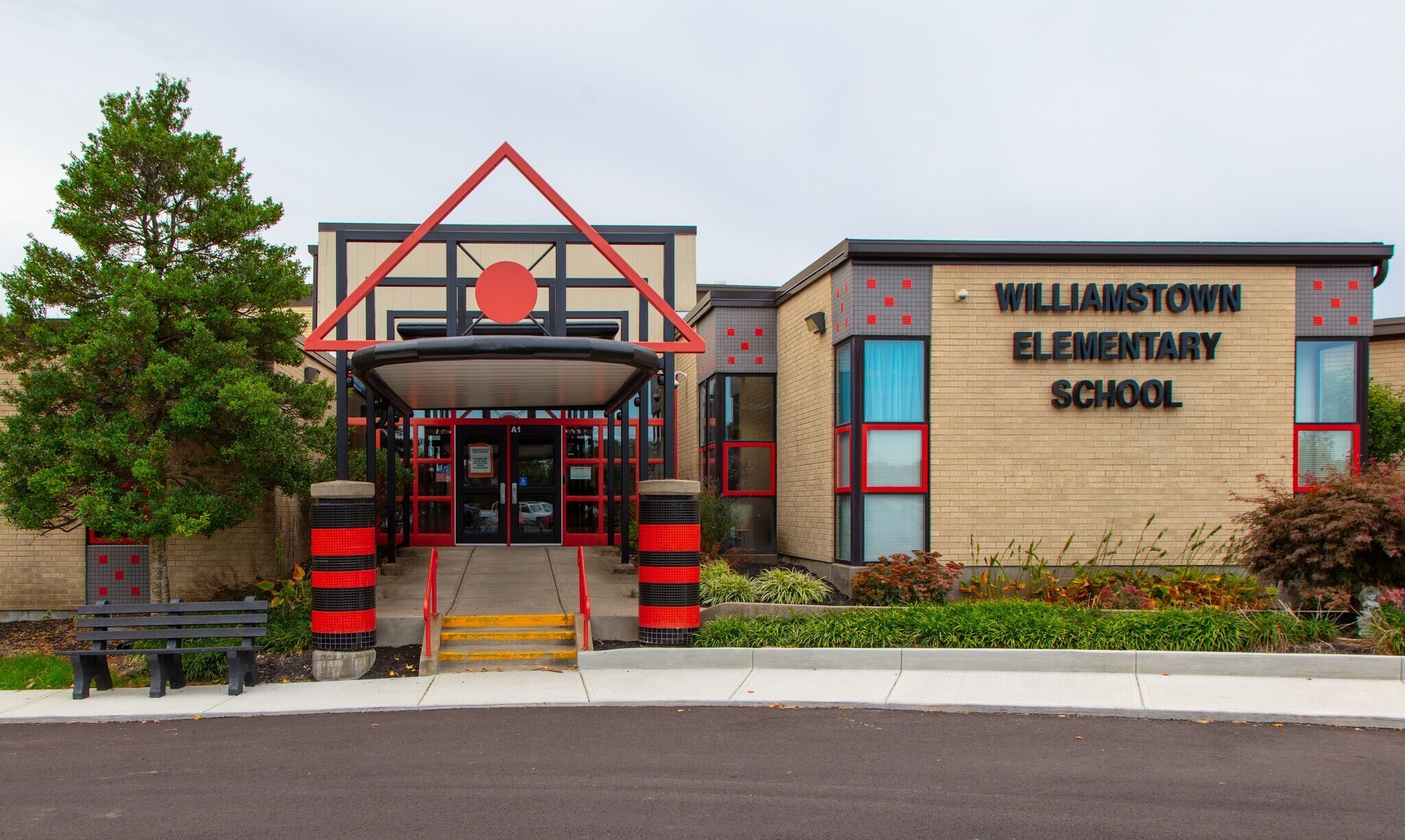
We heard about your regatta project. How did it evolve?
The original project started with a high school engineering class. Students were prompted to build boats big enough to support three students with limited materials, such as cardboard and duct tape. This year, we wanted all grade levels to take part in this project. Each grade level had different roles and responsibilities aligned with their core curriculum goals for this project. Some researched people in our community who support big community events (firemen, police officers, sanitation, the lake owner, our mayor). Some designed their own smaller boats. Others created a propulsion system. Another grade learned about interviewing, reporting, and sharing information through a newspaper or live broadcast. Ultimately, every grade level got to experience a different aspect of it. We were trying to strengthen and build community within our school across grade levels through this project, and we did!
How did the project impact students?
Most noticeable for me was the level of student engagement. I honestly can’t think of a time I saw a student sitting back and doing nothing. Beyond engagement, I saw what I think is the largest strength of Project Based Learning: connection. Students were connecting with their peers, connecting with the subject, and connecting with their teachers, the guides and orchestrators of the experience.
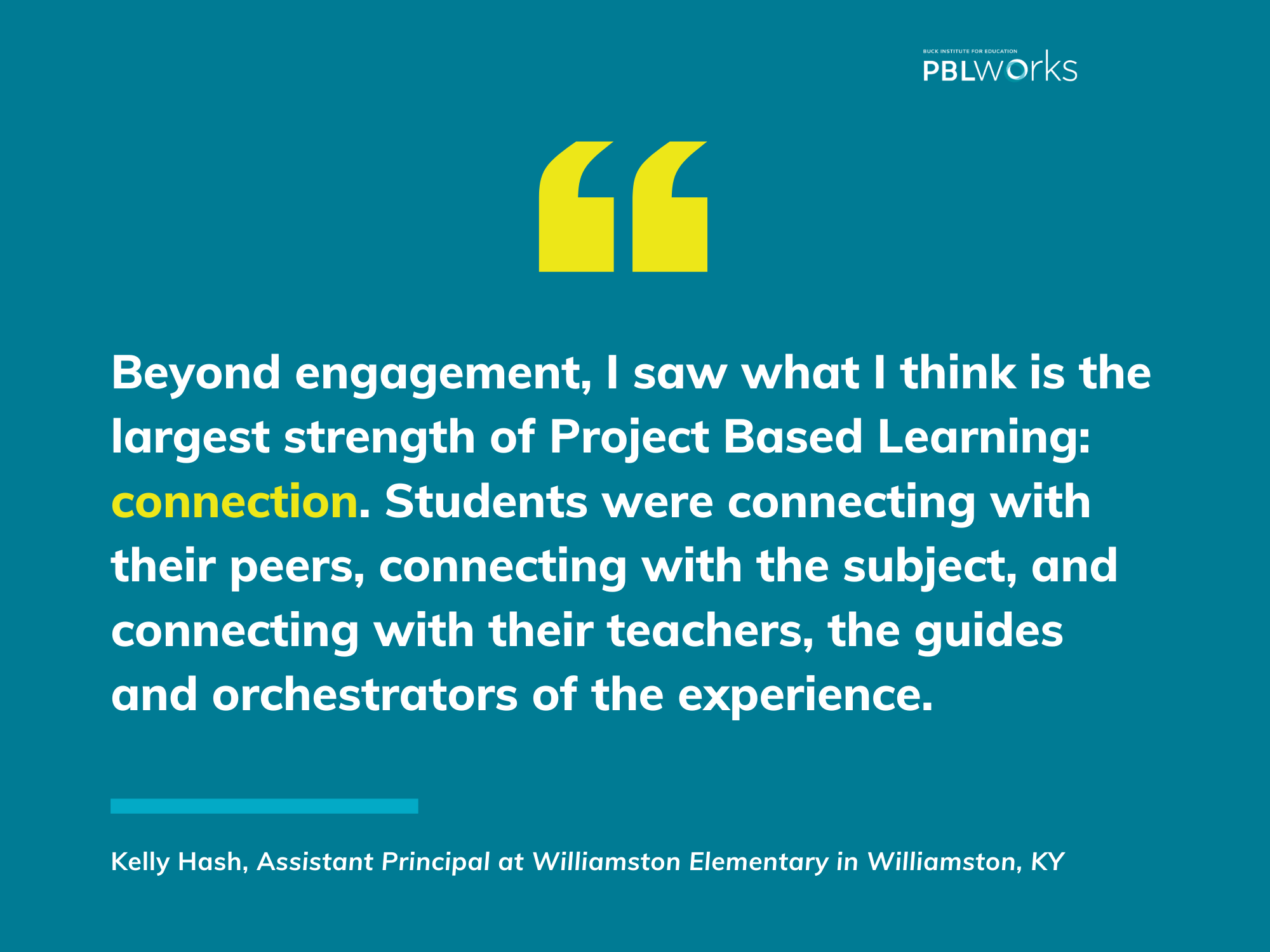
Expand on that principle of connection. Why do you value it so highly?
Connection is the way our world works, not standardized tests. The real-world application is communicating with fellow human beings and learning how to get along with folks you don’t always see eye to eye with. PBL allows you to open that world up and make the connections you need to learn everything that is possible. It’s a great way for kids to figure out, yes, there are others around me, and working together we can accomplish great things.
What changes have you seen in your teachers as a result of PBL?
They realized they get to dream. Then they could figure out what all fits into that dream. That backward design gave teachers a little more freedom and a little less issue with planning. Our teachers are starting to benefit from it—fewer discipline issues, more engagement, and more growth. After our regatta, it was teachers who asked to do another school-wide project.
As an administrator, what do you appreciate about witnessing your school embrace PBL?
"With PBL, we always talk about that messy middle. And that messy middle is what I love most about it. I love seeing the final product, but I'm one who enjoys the journey, just getting the kids to go beyond paper and pencil to dream, expand their original thoughts and ideas, and see some of them come to fruition."
With PBL, we always talk about that messy middle. And that messy middle is what I love most about it. I love seeing the final product, but I'm one who enjoys the journey, just getting the kids to go beyond paper and pencil to dream, expand their original thoughts and ideas, and see some of them come to fruition.
Any final advice for those beginning their PBL journey?
Embrace it. Don't be afraid of it. When we look at great feats in the world, we usually refer to them as works of art. Project Based Learning is very much like that, and anyone who's ever created a work of art knows that that process is not always done in steps A, B, or C. Yes, there's a structure involved, but there's got to be that give and take to allow it to grow organically. So, to any administrator, don't be afraid to let that organic learning take place, because that's usually where we see the greatest growth.
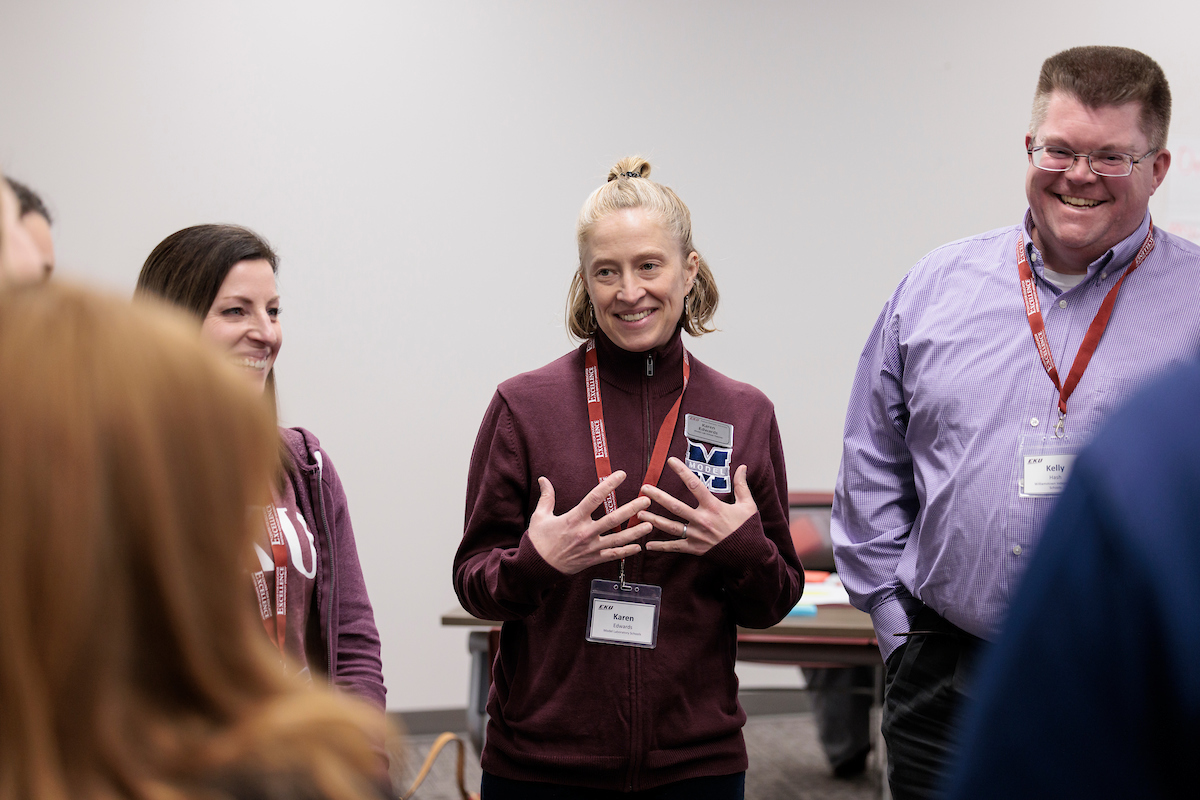
We love stories from the field. If PBL has reshaped the learning experience for your students, we want to hear all about it! Reach out to us at ✉️ [email protected]. Let's explore ways to share your PBL story and inspire other educators in their journey!
